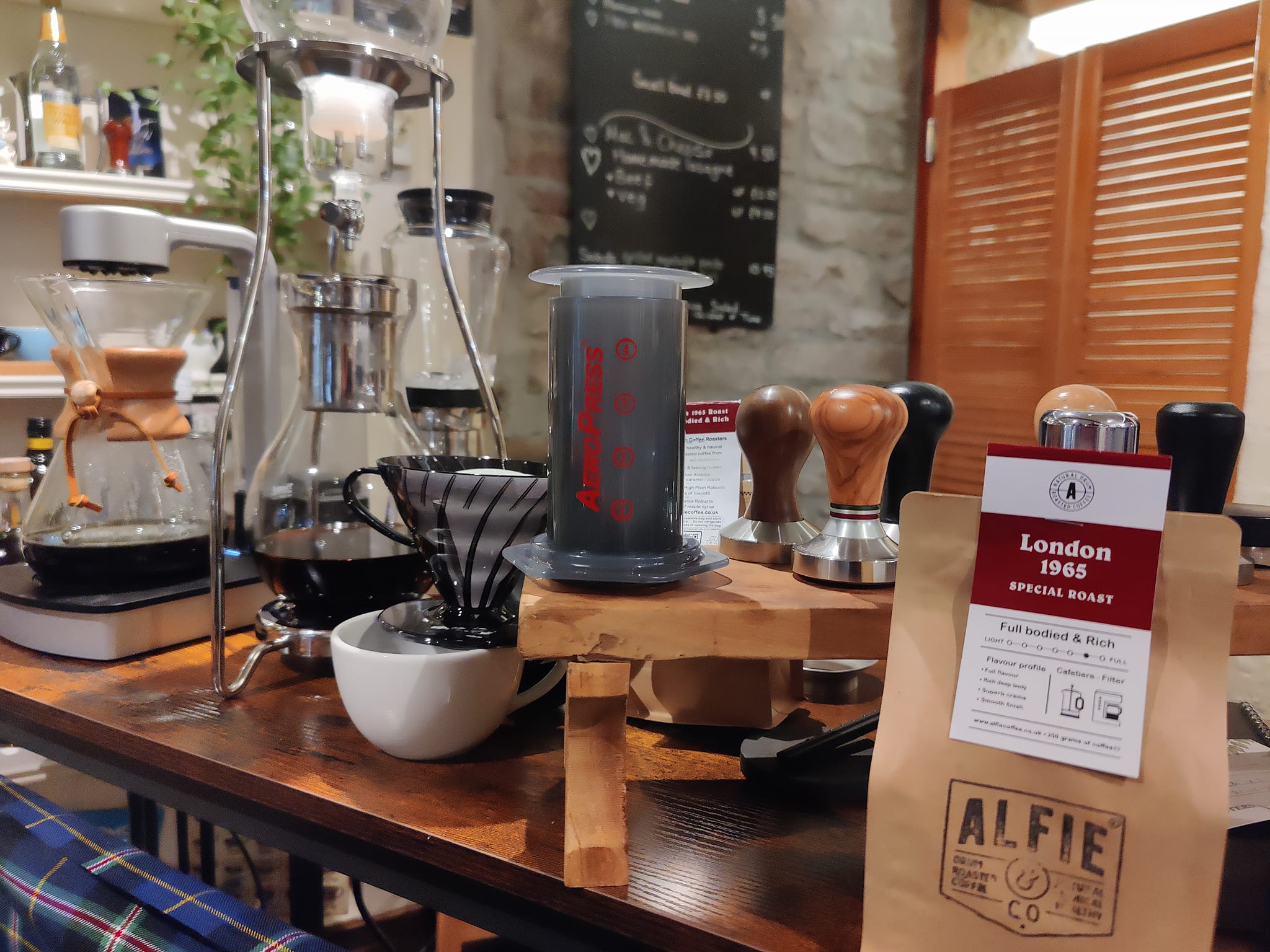
In the (sometimes surprisingly complicated!) world of coffee, brewing coffee can be taken from a relatively straightforward and simple task, up to being a highly developed art form. From the precise extraction of espresso to the simplicity of a French press, each brewing method brings out unique flavours and aromas from the roasted bean, and each will have it's admirers and believers, and those that dislike and disagree.
One of the best ways of finding out the differences each method has on the flavour profile is to come along to one of our Coffee Experience Nights where we'll take you through exactly that! However if you can't, then the points below will help you understand a bit more about each brewing method:
The methods we've picked out from the large and dizzying list are the ones for which you can buy our roasts ready ground. We don't just taste one brewing method and decide it's good enough for the rest - each of our Signature Roasts is hand prepared for each technique and tasted, tasted and tasted again with any refinements required. This means we can guarantee that your Chemex or your Cafetiere grinds are spot on for that method.
1. Chemex: The Chemex brewing method, developed in 1941 by a German scientist, Peter Schlumbohm, is known for its elegant design and clean, crisp flavours. It utilises a thick paper filter, which results in a smooth cup of coffee with minimal sediment. The process involves pouring hot (never boiling!) water evenly over the coffee grounds in a Chemex carafe and allowing the coffee to drip through the filter. This method typically produces a bright and flavourful brew, highlighting the intricate nuances of specialty coffee beans.
2. V60: The V60, also known as the Hario V60, is a pour-over brewing method that emphasises control and precision. Named after its V-shaped cone and 60-degree angle, the V60 requires a steady hand and a careful pour to achieve optimal extraction. The thin paper filter used in the V60 allows for a quicker brew time compared to the Chemex, resulting in a lighter-bodied coffee with more pronounced acidity and clarity of flavour. At Alfie & Co Coffee Roasters, we don't differentiate between the V60 and Chemex methods, but rest assured we've checked to make sure the grind is just right for either!
3. Espresso: Espresso is a concentrated coffee beverage brewed by forcing hot water through finely-ground coffee under high pressure. This method yields a rich, full-bodied espresso with a layer of crema on top, known for its intense flavour and aroma. Espresso serves as the foundation for a variety of coffee drinks, including cappuccinos, lattes, and macchiatos, and requires specialised equipment such as an espresso machine and a grinder capable of producing a fine grind size. Espresso is also one of the areas where you'll find lots of new techniques and methods coming into fashion, but ultimately the simple, traditional approach is always the best in our humble opinion!
4. Aeropress: The Aeropress was invented in 2005 (so a young pup in the world of coffee!) by then Stanford University engineering instructor Alan Adler. This is a versatile and portable brewing device that has gained popularity among coffee enthusiasts for its ease of use and ability to produce a clean and flavourful cup of coffee. This method involves steeping coffee grounds in hot water and then using air pressure to push the brewed coffee through a paper or metal filter. The Aeropress allows for experimentation with different brewing techniques, resulting in a range of coffee profiles from bold and robust to delicate and nuanced. The equipment is also very transportable, meaning coffee lovers can easily have an Aeropress kit with them on their travels!
5. Cafetiere (French Press): The French press, also known as a cafetiere, is a classic brewing method that produces a full-bodied and richly flavoured cup of coffee. It involves steeping coarsely-ground coffee in hot water for several minutes before pressing down a plunger to separate the grounds from the brewed coffee. The metal mesh filter of the French press allows for more oils and sediment to pass through, resulting in a coffee with a heavier mouthfeel and earthy undertones.
6. Moka pot: The Moka pot, invented in the 1930s by Italian engineer Alfonso Bialetti, is a stovetop brewing device that produces a strong and bold coffee similar to espresso. It works by forcing steam pressure through finely-ground coffee in a bottom chamber, creating a rich and aromatic brew. The Moka pot is popular in households around the world for its simplicity and ability to produce espresso-like coffee without the need for expensive equipment.
Whilst there is a plethora of choice out there, we would only ever recommend a steel pot. Aluminium ones should be routinely checked for damage or wear and tear which could then allow aluminium to leech into the brew.
So there you have it! A very simple, straightforward explanation of some of the most popular methods available.
Whether you prefer the clean and bright flavours of a Chemex or the bold intensity of an espresso, there's a brewing method to suit every palate and occasion. So why not embark on a journey of coffee exploration and discover your perfect cup and don't forget to buy your compatible bag of ground roast from us!
